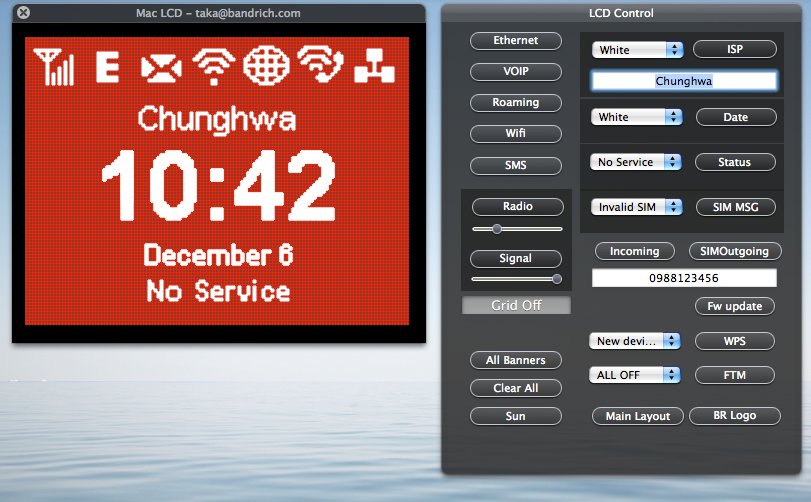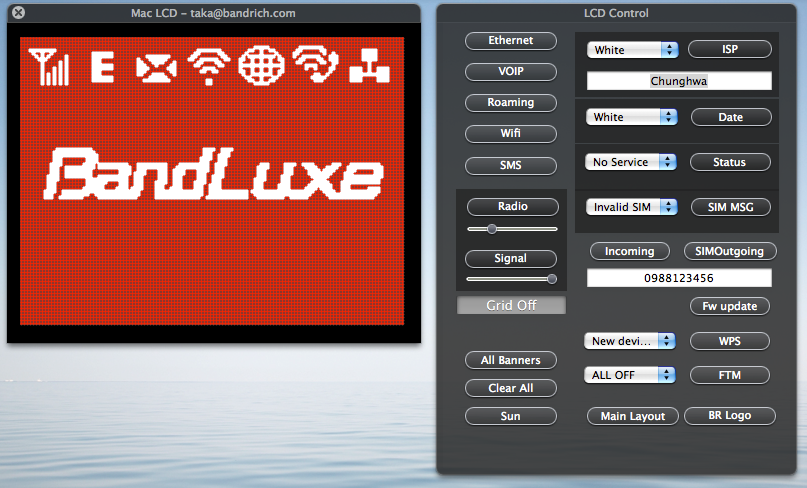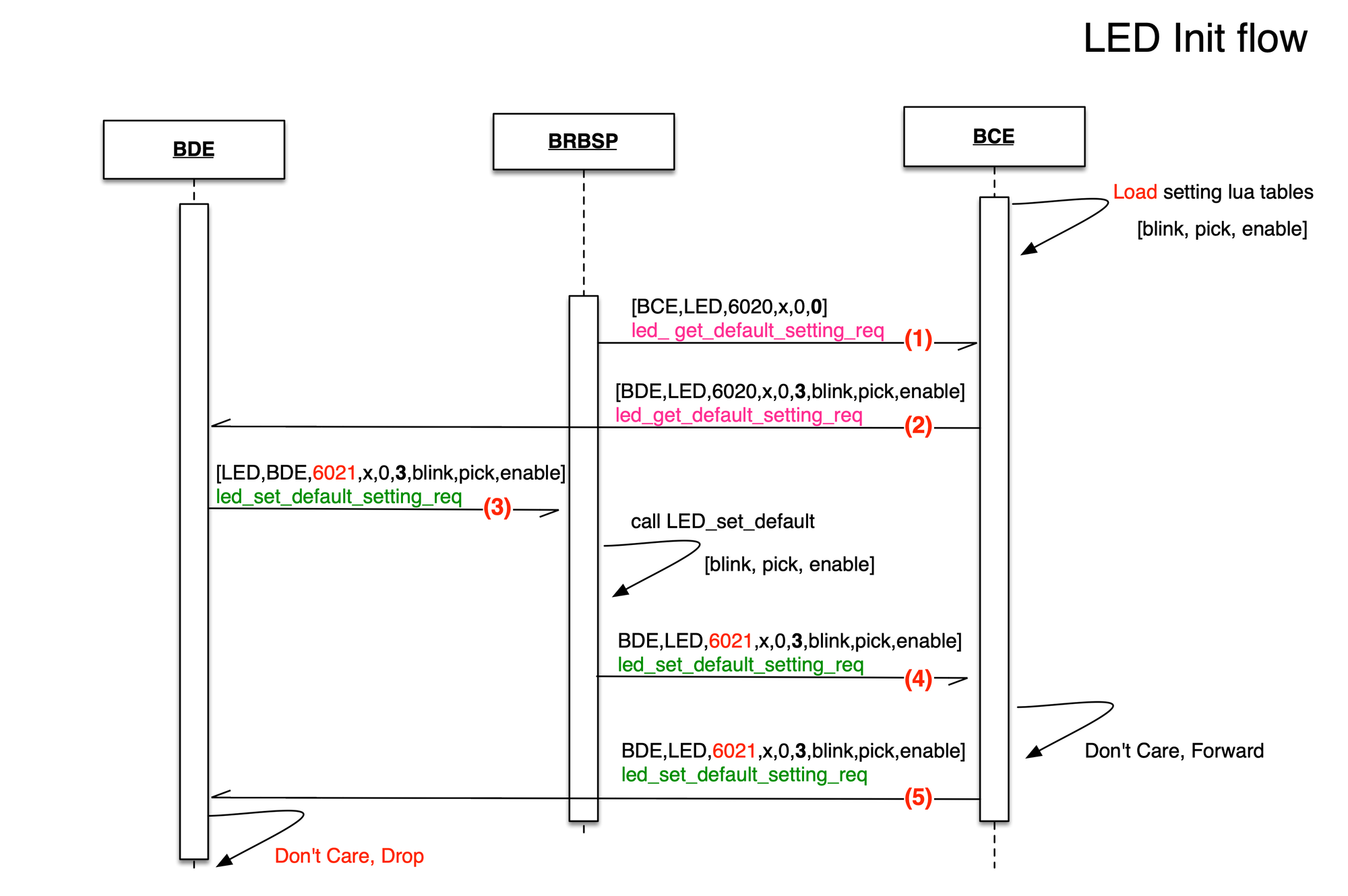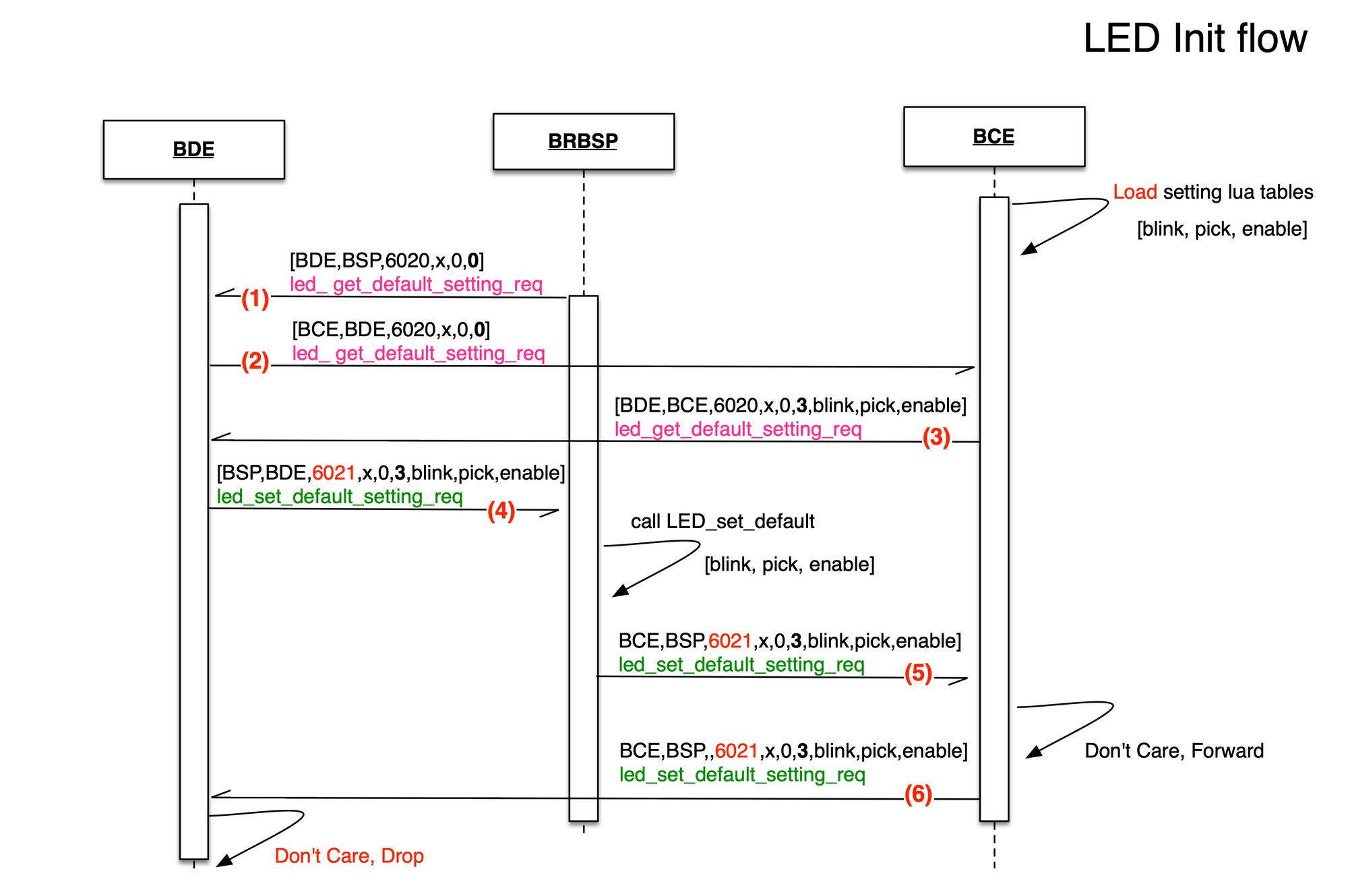OLED Daemon and Simulator | OLED應用與模擬器

In the development process of the LTE router, I was tasked with a challenging mission: to develop an application for OLED displays. This task played a key role in the complex environment of concurrent software and hardware development. To effectively tackle this challenge, I utilized the C programming language to create an OLED daemon based on a client-server architecture. This approach not only enhanced the flexibility and scalability of the software but also laid a solid foundation for subsequent development efforts.
在 LTE路由器開發項目中,我承擔了一項充滿挑戰性的任務:開發一款針對OLED的應用程序。這項任務在同時進行軟硬體開發的複雜情境下,扮演了關鍵角色。為了有效地應對這一挑戰,我採用C語言開發了一個基於Client-Server架構的 OLED守護進程(Daemon)。
Considering the potential delays in hardware development that could impact the overall project timeline, I further developed two simulators using the Cocoa and QT framework. This simulator enabled our team to proceed with software development even before the hardware was fully ready. Moreover, it provided a real-time feedback mechanism for testing and optimizing the OLED display effects, significantly improving the efficiency and quality of development.
考慮到硬體開發可能存在的延期問題,進而影響項目進度,我進一步採用了Cocoa框架與QT框架開發了兩個模擬器。這兩個模擬器使我們團隊得以在硬體尚未完工之前就開始軟體開發,同時它還提供了一個即時的回饋機制來測試和優化OLED的顯示效果,這大幅提升了開發效率和產品質量。





